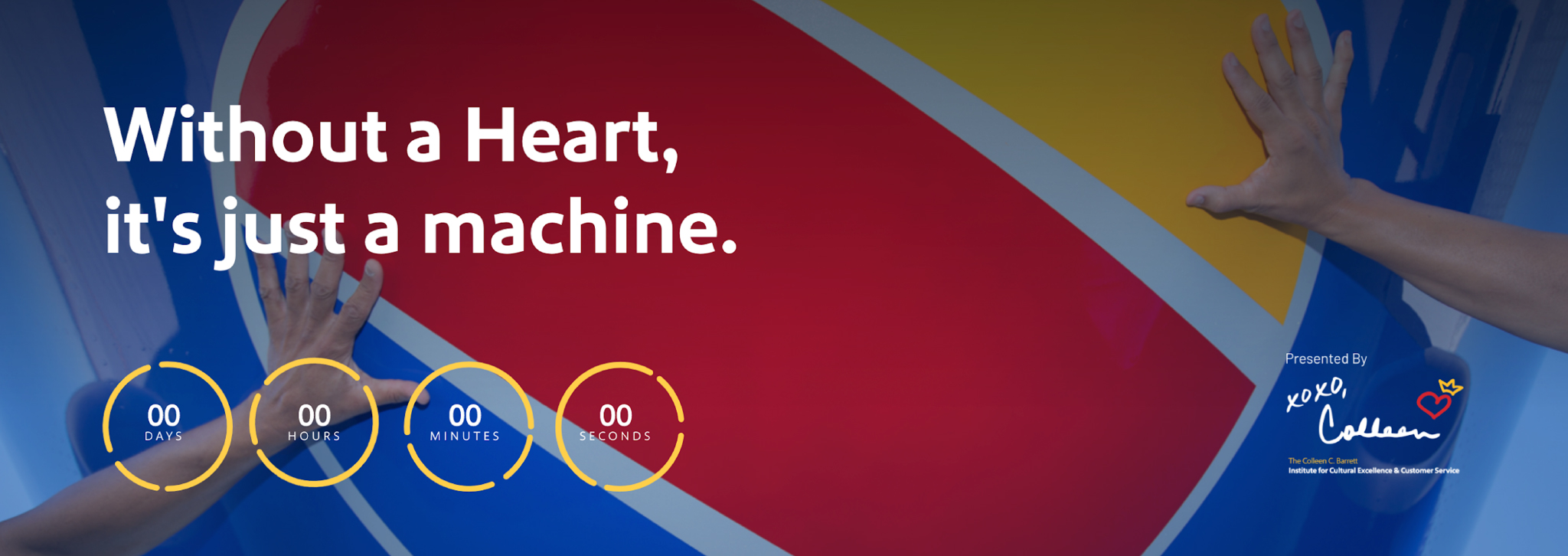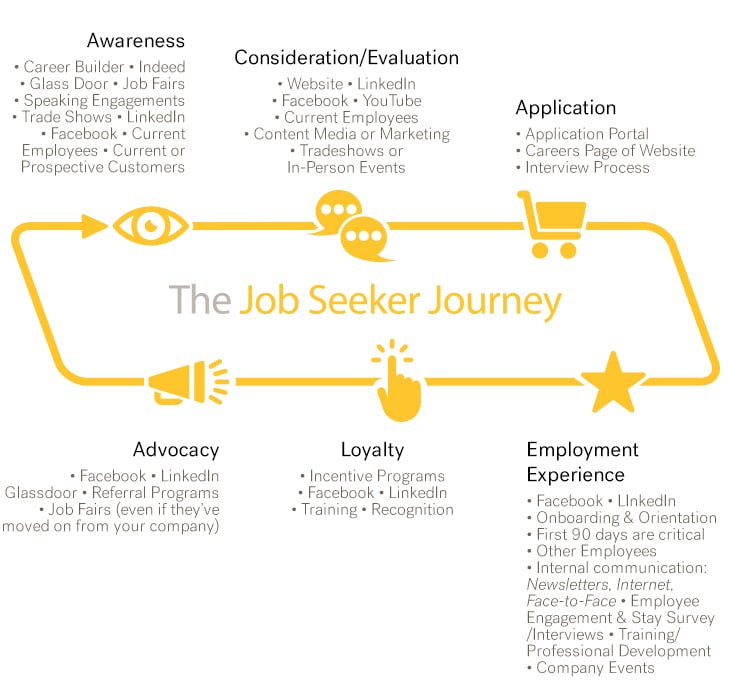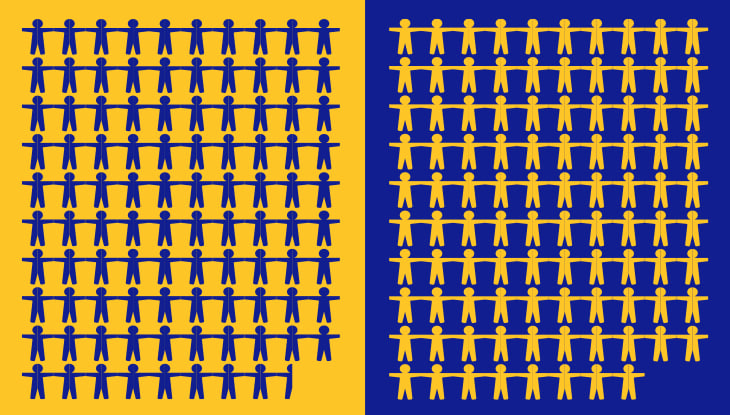Don’t spend a penny on marketing and advertising if your employees can’t deliver on what you are promising to your customers. That is what we tell our clients and prospects every day. You are wasting your time and money if you are not considering how your employee experience affects your customer experience.
Sure, you may think you have the best product or service with the most incredible value proposition, but if the people (your people) who are responsible for bringing that to life for your customers aren't on board, it is all for naught.
The problem is, too many people think of marketing as nothing but advertising, or promotions, or clever, well-designed trickery crafted to convince people to part with their money. That’s what a lot of marketing firms have sold in the past, and, one way or another, still do. But a well-crafted marketing and brand strategy can only exist one way—when who you really are as a company is exactly who your marketing says you are. And that starts with your employees.
This is precisely why we recently participated in the renowned Southwest Culture Connection. And we’d like to share some of our biggest takeaways with you.
1. Put employees first.
We know companies like Southwest or Oshkosh Corporation, that put their people first enjoy higher rates of customer satisfaction and loyalty (+10%), productivity (+14%), employee well-being (+66%), profitability (+23%), and lower rates of absenteeism (-81%), turnover (-18% to -43%), safety incidents (-64%) and quality defects (-41%); that’s all according to Gallup’s most recent employee engagement survey. Southwest’s philosophy is happy employees = happy customers = happy investors. Southwest puts their employees first by:
- Empowering employees to do the right thing for the customer and for the company.
- Ensuring employees have the latitude and support to do what they believe is right. This means trusting employees will do everything they can to take great care of their customers.
- Holding employees to a high standard - everyone at Southwest knows that wearing the uniform means something and people are watching them, so they set clear expectations about how Southwest employees behave and how they treat people.
- Fostering passion. Southwest believes that their employees’ passion about what they do manifests in how they treat people.
2. Empower employees to be themselves.
Southwest encourages employees to live out the Southwest culture and values in their own way; not like a bunch of brainwashed robots. One particularly heartwarming example that was shared during the conference was about an elderly woman with dementia who was having a tough time on a flight. She was traveling with her daughter and seated toward the front of the plane in the aisle seat. When it was time to deboard, she was afraid to leave the plane, and started to hold things up. Now if you’ve ever been on a plane when people are slow to get off, you know exactly what happened. People became irritated and frustrated. Seeing this, one of the Southwest flight attendants, Mark, approached the woman and asked her if she’d like to dance. In his own, authentic way he was able to assist the woman ... and they two-stepped right off the plane.
The main thing to remember here is that culture must be imbued with selflessness if others are going to buy in. It cannot be forced. Culture will thrive when employees can be themselves in it.
3. Culture is everyone’s job.
Company culture can be defined as a set of shared values, goals, attitudes and practices that characterize an organization. It's the way people feel about the work they do, who they do it with, the values they believe in, where they see the company going and how they are going to get there. Because culture is so all-encompassing, it is everyone’s job to work on organizational culture. When your employees do this, your company culture can be a true, competitive advantage in the marketplace, just like Southwest. One of the culture keys for Southwest that keeps culture everyone’s responsibility is having culture teams at all locations. Even during the pandemic and people working remotely, there is still a focus on maintaining culture and keeping the distributed teams connected.
4. Leadership has to be engaged directly with employees and culture.
The moment leaders don’t live up to their stated values, no matter how small a breach, it gives permission for others to let things slide. Leaders have to live and breathe the organizational values and translate those values and beliefs into actionable behaviors to model for and teach to employees. Southwest leaders engage directly with employees and the culture through the following:
- Southwest leaders attend new employee orientations. Southwest’s president, Tom Nealon, even goes out and meets with every single new pilot during their onboarding.
- Culture Blitzes — Four or five leaders go visit locations, share a meal, meet with employees and serve. They get to know their people and give recognition and awards and have some sort of fun event on site.
- Southwest engages in quarterly reviews rather than annual reviews.
5. Invest in onboarding.
The employee experience begins long before the employee’s first day. This is something Southwest recognizes as an important opportunity to communicate and hire for their intentional culture. Some key ways Southwest invests in onboarding were highlighted during the conference.
- Make the first day experience memorable.
- Educate employees during the hiring process so they know what they’re signing up for when they come to work for your company.
- Clearly communicate expectations—In the case of Southwest, yes, they are a great company, and you’ll have a great career with freedom to move about the company and be provided new opportunities … but with that comes a level of commitment. They communicate that Southwest employees work hard, and expect them to come to work every day and be their best.
Be intentional about the entire employee experience. At Imaginasium, we help our clients navigate the job-seeker/employee journey to best market and communicate to that audience. A job-seeker moves through their journey with your company, which, hopefully, results in them becoming hired, and there are different touchpoints they will experience. If you want them to move through to loyalty and advocacy, there are certain things you will want them to experience along the way. The better experience you can provide, the more likely your ability to retain those employees.
Be very clear on values. Southwest hires for attitude and fires for attitude. Hiring for culture is a key strength of Southwest as well as many others.
Interested in help with Employee Engagement?
Contact Melinda.
6. Be crystal clear on what “Culture Fit” really means.
Because culture is such a nebulous thing, getting very clear on what it means to be a good culture fit is incredibly important. Southwest believes that it’s not tied to who you are; but rather, how you show up. It’s based on Southwest values and the Southwest way. It is so clear, in fact, that it’s very obvious if you’re not in alignment with Southwest’s values.
7. At Southwest, you have an important seat.
It’s actually harder to get a job with Southwest than it is to get into Harvard! This is because they hire to their values. They screen possible new hires in interviews to see if they fit their values, not the individual's values. This not only reduces employee turnover, but also increases employee satisfaction. Only 1.5% of employees are let go, and only about 2% leave on their own.
8. Recognition is an important part of culture and engagement. And needs to be intentional.
Southwest makes a huge point to recognize their people on a regular basis for their hard work and living up to Southwest’s values. They make a big splash, involving employees’ families and sharing stories of how employees have gone above and beyond for their customers and for each other. Recognition doesn’t cost you much, but it makes a big difference.
9. Build a culture of diversity and inclusion.
According to Gallup, “Employees in inclusive work environments feel appreciated for their unique characteristics and are therefore comfortable sharing their ideas and other aspects of their true and authentic selves.” This is incredibly important to the culture of Southwest and is represented multiple ways in the values they expect employees to live by.
Southwest believes diversity and inclusion is about putting people first. It’s how you get the best out of everyone, because there is strength in the combination of different backgrounds and points of view. Raquel Daniels, Southwest director of diversity and inclusion, put it perfectly: "Diversity is asking people to the party, while inclusion is asking them to dance."
10. Invest in internal communication.
The best internal communication strategies do more than simply manage and distribute information. They can foster an engaging environment ripe with relationships built on trust. That trust, in turn, creates a strong company culture. Southwest recognizes the importance of a strong internal communication strategy and shares the following tips:
- Create a content strategy. Make sure you have a clear messaging architecture and framework that ties back to your brand. Southwest has a well-defined content strategy so they can keep content purposeful and make sure it always "sounds like Southwest.”
- People love to hear blogs written by frontline employees. Southwest asks employees to share content and their readership has gone through the roof. People also love hearing from their peers and everyone has a great story to tell, so let your employees create content.
- Communication is not just to inform. It is key to culture. Southwest uses multiple channels to share and explore. They even have an internal Facebook group dedicated to their people and their culture.
- Leaders seek feedback. Two-way communication is critical to culture success.
11. Communicate in times of crisis.
In an industry deeply impacted by COVID-19, communication through crisis was critical for Southwest. Here is how they viewed culture and communication through the COVID-19 crisis:
- Culture is what shines. You have to invest in it because culture is what gets you through the hardest times.
- Leadership communicated with and offered the opportunity to communicate back on a daily basis with news, updates, and how Southwest was handling the pandemic.
- Weekly video messages from the CEO were shared with clear, candid communication about what was going on. They continued to be open and realistic about the situation.
12. Culture has to be authentic.
Values must be natural and organic and woven into every fiber of the organization. Culture must be based in humility and true to what you stand for (your purpose and vision). It’s more than a mission or brand, it is an organization’s identity. In order for culture to be authentic, employees must have ownership. Here are some guiding questions from Southwest to consider around employee ownership of culture:
- Are you equipping employees at a local level to display the culture you want to see?
- Do you have employee groups forming?
- What employees are sending what messages?
- Can they recite your mission?
- Do you have a team dedicated to culture?
- Are you listing priorities and supporting them to execute on them?
How to Improve Customer Experience: Focus on Your Company Culture
There is no doubt that culture has a significant impact on an organization’s ability to achieve strategic results. But what is equally important, if not more important, are the values defined by the organization, because it’s the values that govern how the strategy should be accomplished. Consistent behaviors based on a common set of values that can be delivered on at every level of an organization are the basis of a strong culture.
A great culture leads to great employee engagement, and that leads to great customer experiences. So, make culture a key part of your business strategy—define values, assign behaviors to those values, communicate, remind, communicate, and celebrate!
Interested in help with Employee Engagement?
Contact Melinda.





